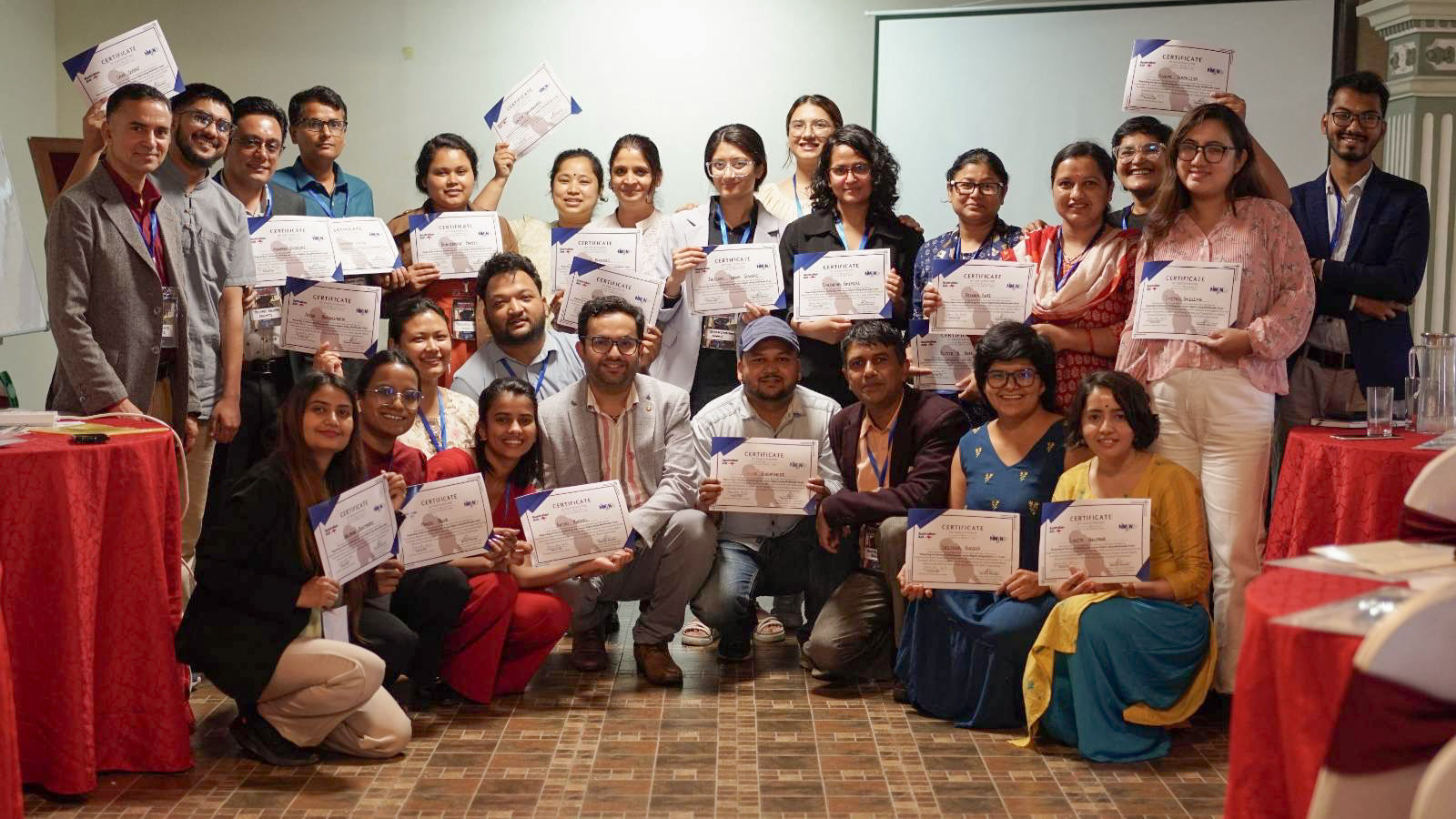NIMJN’s training on Reporting on Human Trafficking and Human Rights using Multimedia Tools in Bagmati Province
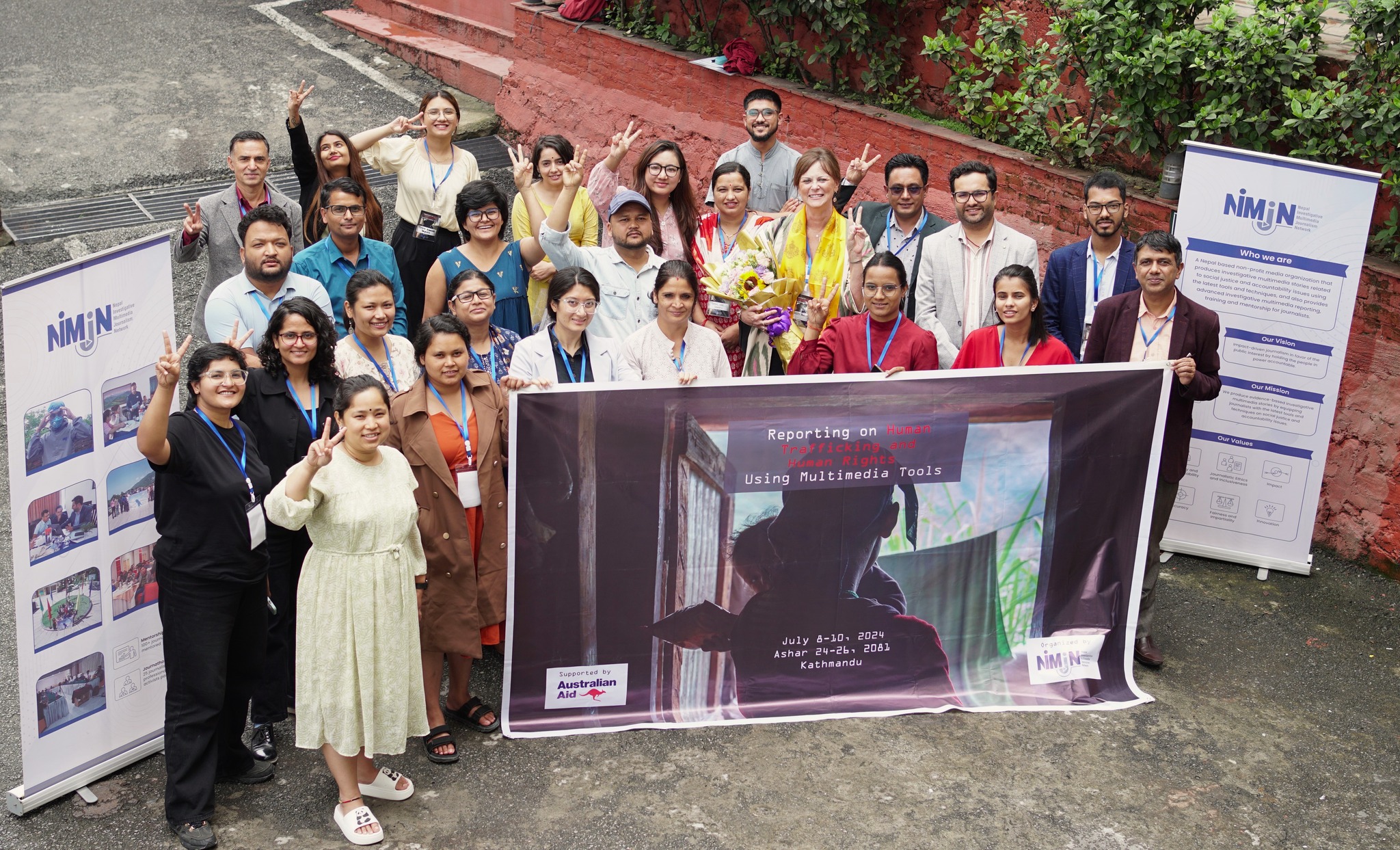
Nepal Investigative Multimedia Journalism Network (NIMJN), conducted the final of its six provincial trainings in Kathmandu for the Bagmati province. The two-and-a-half-day training on ‘Reporting on Human Trafficking and Human Rights using Multimedia Tools’, supported by Australian Aid, was organized from July 8 to July 10, 2024, with 20 participating journalists from Bagmati Province.
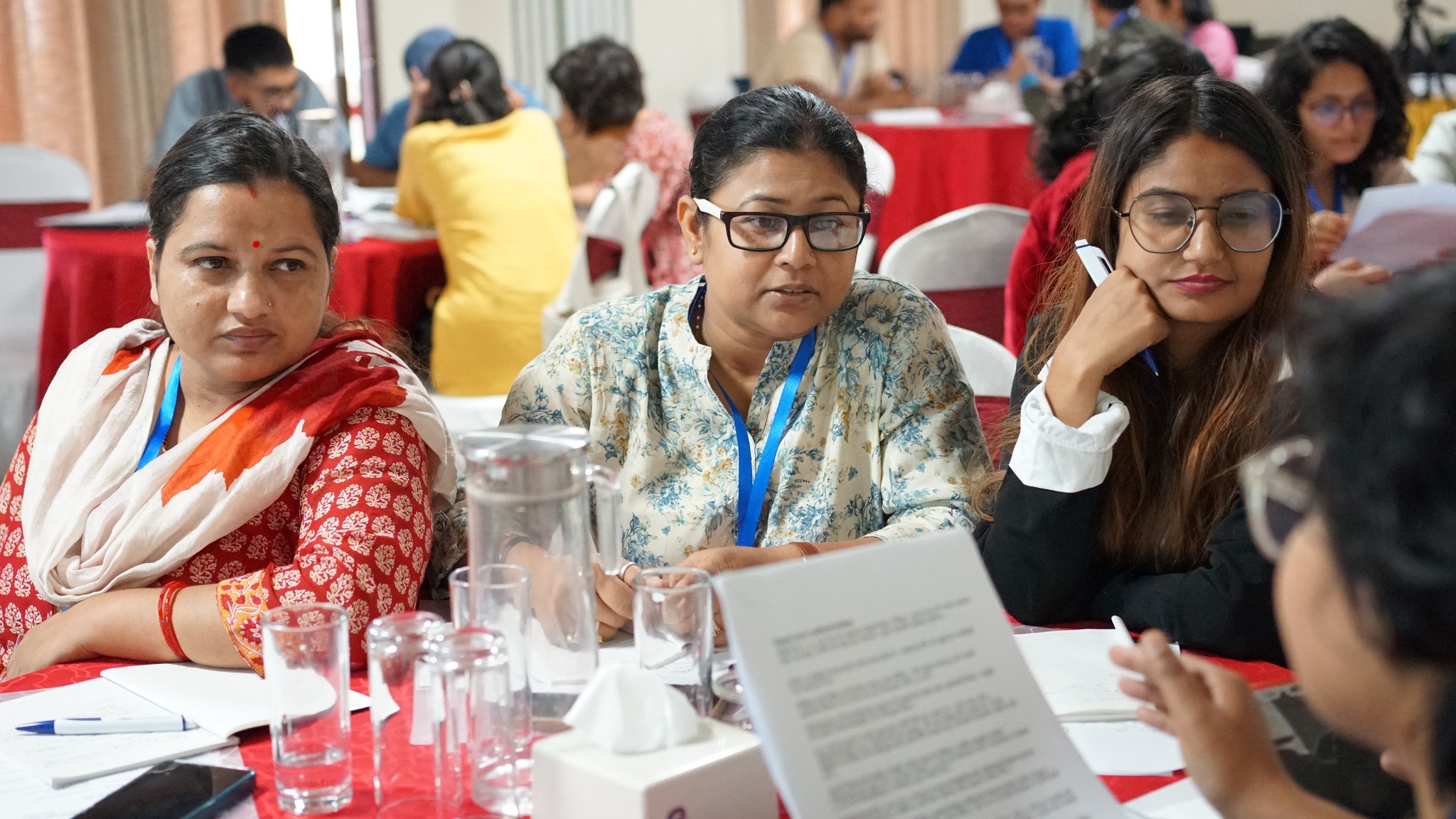
The two-and-a-half-day residential training consisted of sessions ranging in topics from introduction to investigative reporting to anti-trafficking laws, stories of survivors, use of multimedia tools, data-storytelling, experience sharing by NIMJN fellows on their investigative reporting stories and how to maintain mental well-being as a journalist while reporting.
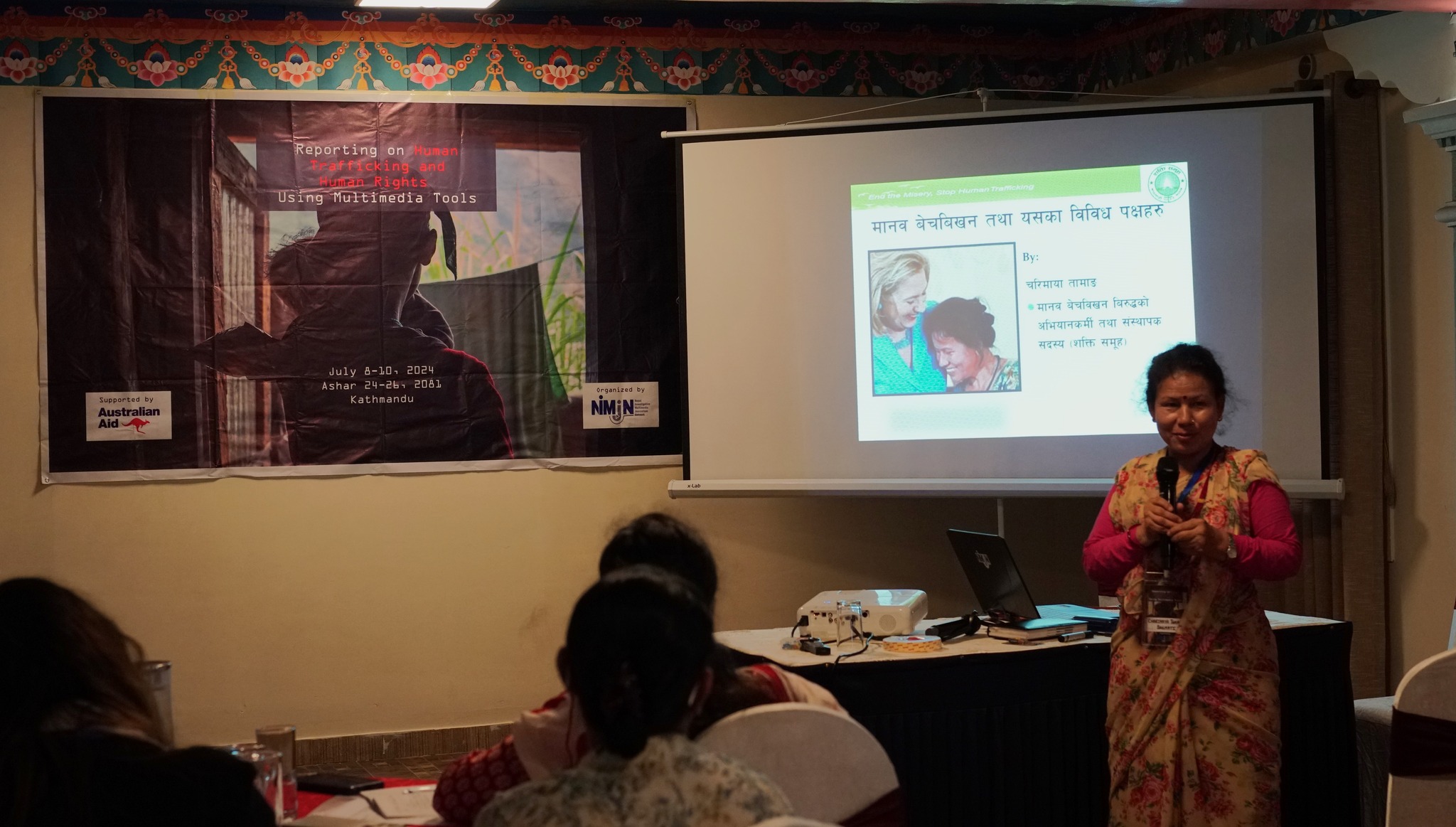
Charimaya Tamang from Shakti Samuha and Bishwo Khadka from Maiti Nepal were invited as local guest speakers, to help the participants learn about the status of human trafficking and human rights in Bagmati Province and the overall scenario in Nepal. Their sessions were also focused on how to identify the evolving trends of human trafficking in Nepal, how to communicate with survivors for sensitive reporting, and how to ethically highlight these issues as investigative reporters.
In the mental health session, Dr Bigya Shah discussed mental well-being and how stress can be managed by journalists while reporting. Also, NIMJN fellows Reena Thapa, Suresh Bidari, and Kalpana Bhattarai shared their experiences in producing investigative stories related to human trafficking for NIMJN. Other trainers included Dinesh Regmi, a senior NIMJN fellow and a journalist reporting on migration and human trafficking issues, Shuphal Kafle, a seasoned journalist and copy editor at NIMJN, and Rajneesh Bhandari, NIMJN’s chief editor.
The training included a lot of interactive group work where the participants devised their investigative story ideas, formed hypotheses on them, and discussed how they could be realistically pursued. They also made a one-minute video each to utilize the mobile journalism and multimedia storytelling skills they learned during the training. The videos they produced and edited were presented on the final day of the training. The participants also learned about online tools for data visualization like Datawrapper and practiced preparing interactive maps based on Nepal’s population.

Australian Ambassador to Nepal, Felicity Volk, joined in the closing ceremony and reflected on the NIMJN’s journey in conducting the training on Reporting on Human Trafficking and Human Rights Using Multimedia Tools from its initiation last October in Pokhara for Gandaki Province to its final session in Kathmandu for Bagmati Province.
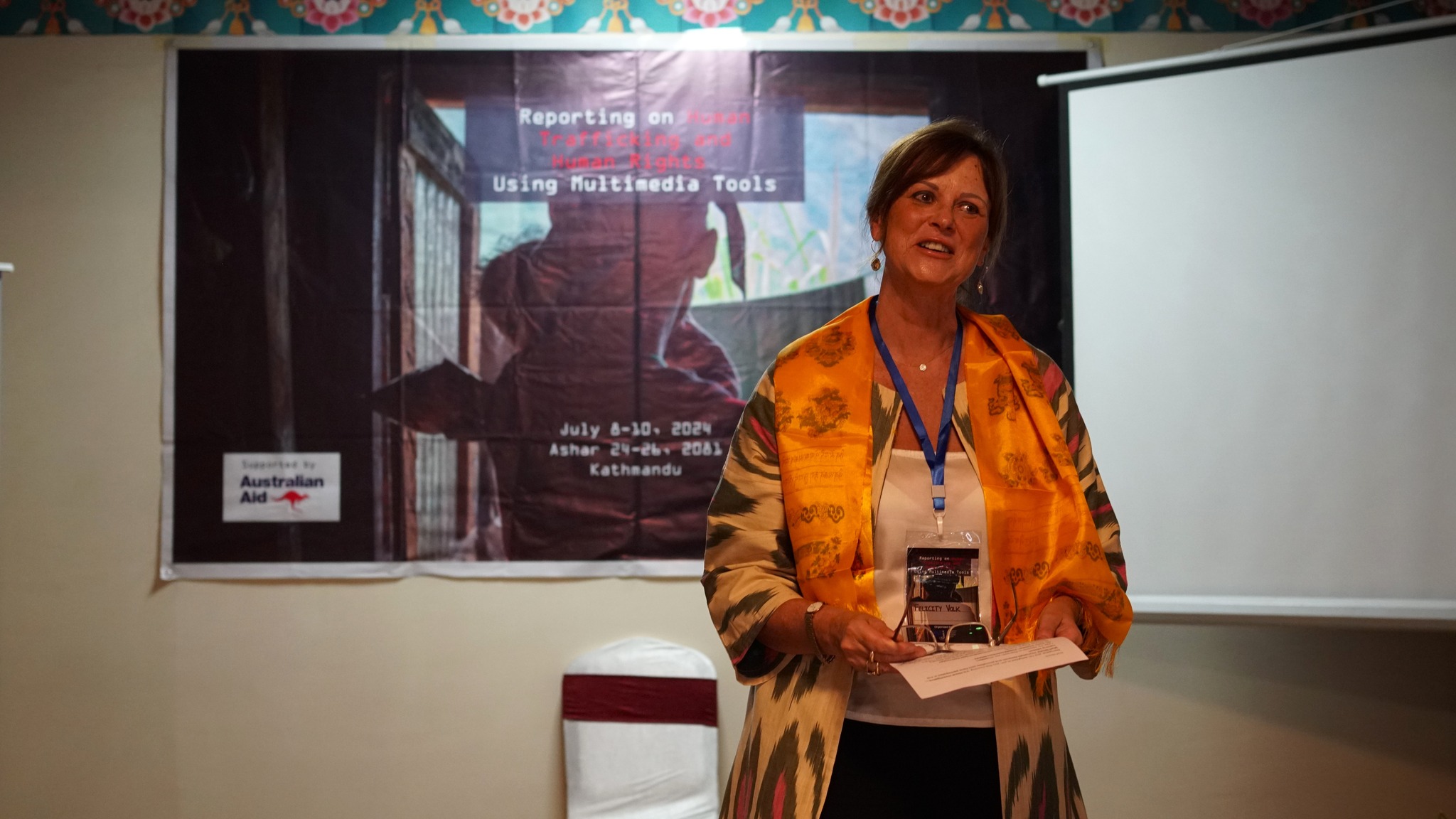
Ambassador Volk congratulated journalists for completing the training. “I want to congratulate every single member of this training program on your passion, and commitment to this course that you have selected…I have watched over the six sessions and its fabulous outcomes. I applaud NIMJN’s commitment to including inclusion and gender diversity which is the heart of the selection process for selecting 120 journalists across six provinces. We live in a very complex world at the moment. Vulnerable people need protection more than ever. Justice, human rights, and dignity are eroded in all corners of the world… So we need your very powerful voices in defense of those whose rights are being eroded. You are the watchdogs of democracy and we need your investigative skills to identify and to bring light into violations. We need your courage to ensure that the perpetrators are held to account…And we need your resilience to make that commitment to stay at the front line to safeguard human rights including in relation to human trafficking, modern-day slavery, gender-based violence. Like you, Australian Government is committed to protecting these fundamental freedoms because these form bedrock of democracy and freedom of expression is critical element to all of that…So Australian Government actively advocates for media freedom and protection of journalists in our partner countries like here in Nepal.”
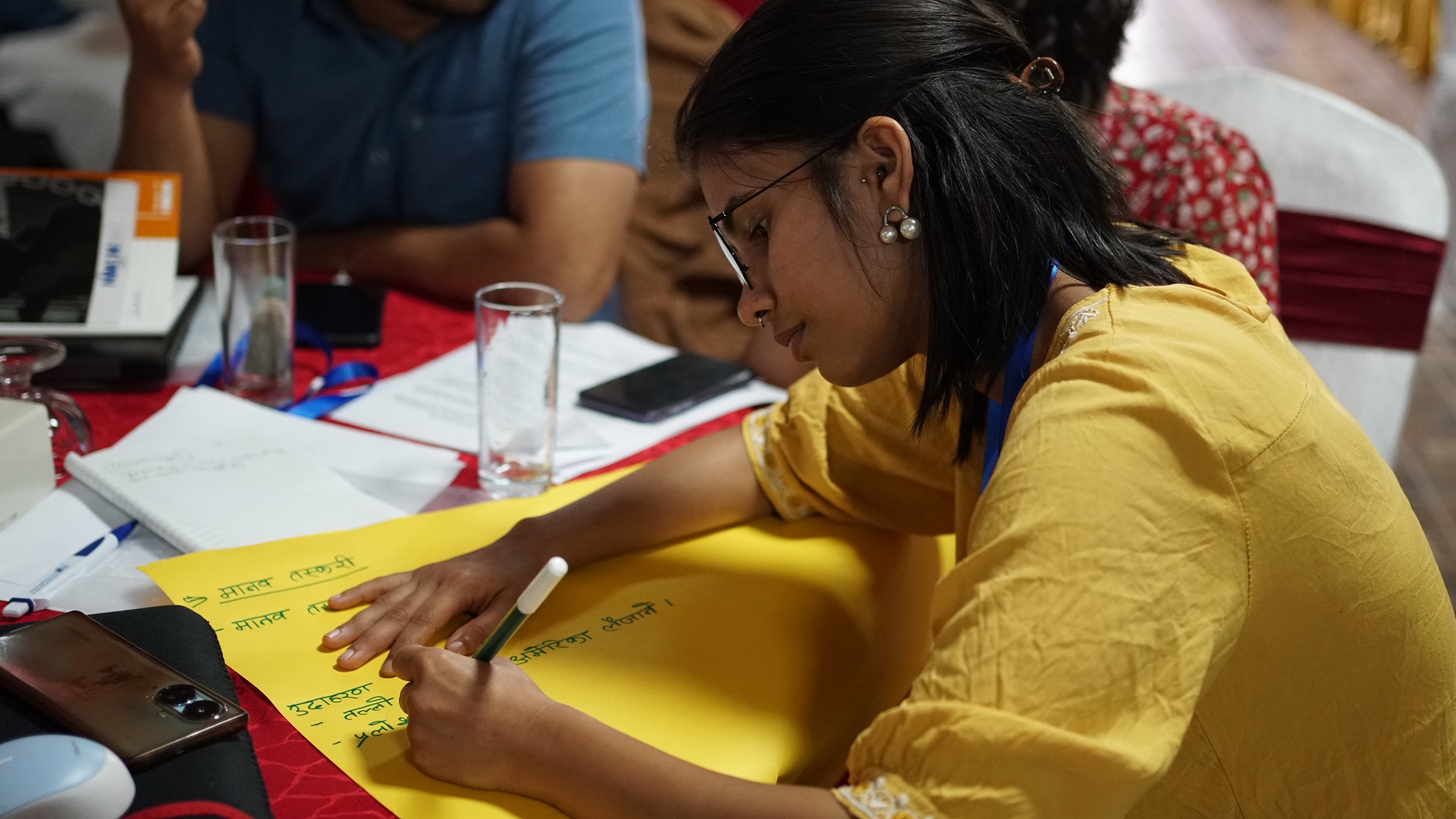
Overall, the participants for the training came from diverse backgrounds, media outlets and experiences. After the training completion, they can apply for the NIMJN Human Trafficking Reporting Fellowship, under which 2 journalists from Bagmati Province will have the opportunity to produce an investigative multimedia story each on human trafficking and human rights under the mentorship and editorial support of NIMJN.
Here are some excerpts from participants regarding their experience in the training:
“It has been more than a decade for me working in this field of journalism. Even today, the majority of media houses are practicing traditional journalism. After attending NIMJN's capacity building training on human trafficking and human rights reporting, I now have a clear understanding on concepts of human trafficking and human smuggling and how these issues should be covered sensitively based on evidences. Moreover, I realized how crucial it is to use multimedia tools and create hypothesis with proper pitching format so that we as journalists can disseminate the information in a holistic way. Also, the mental-wellbeing and safety of journalists while reporting are not prioritized but in this training we got to know about its significance and learnt some tips to maintain mental well-being and ensure safety by conducting risk assessment while reporting.”- Smithu Ghising, Participant
“This training has provided a platform to connect with a network of journalists ranging from early-career to seasoned journalists where we discussed challenges faced by us in the Nepali media landscape and the way forward. The learnings gained from this training to use multimedia tools while reporting and tips to maintain mental well-being are valuable for us to excel as independent journalists.”- Pushpa Thapaliya, Participant (Translated from Nepali to English)
